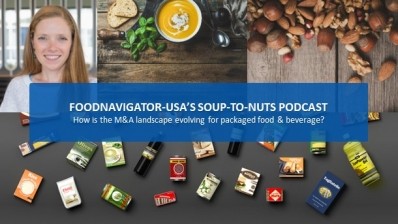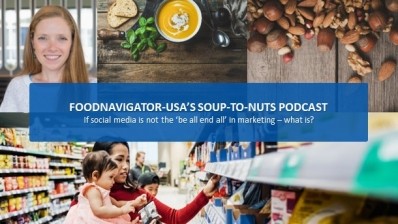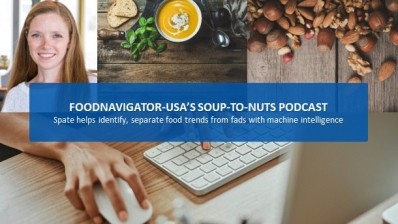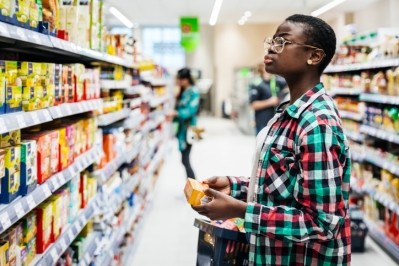Soup-To-Nuts Podcast: Datasembly optimizes ‘hyper-local’ promotions with ‘sharable’ data
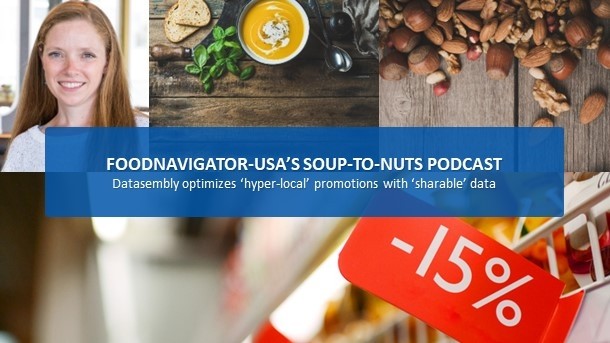
Earlier this month, Kraft Heinz reported organic net sales dropped 0.5% and volume fell 3.2 percentage points in its first quarter, during which it also raised prices 2.7 percentage points for the full company. This pattern repeated for several CPG companies, including cereal maker WK Kellogg, which reported a 0.8% decline in adjusted net sales and a 7% drop in volume it its first quarter over the prior year, which offset a 6.3% price realization.
In response, some companies are increasing merchandising and advertising to convince consumers the “value” of their products is worth the higher prices. And while this has worked for some players, such as Kellanova, most consumers are not buying it.
In fact, an increasing portion of consumers are not buying anything unless they have a coupon, the product is on sale or it is offered at a price point lower than competing products. Indeed, 55% of shoppers told Circana in a year-end survey that they are looking for sales and deals more often, in addition to clipping coupons, exploring store brand and even changing where to shop to save money.
This disconnect between current pricing and marketing strategies and what consumers will or can accept suggests retailers and CPG brands must re-evaluate their marketing strategies to remain competitive in 2024.
In this episode of FoodNavigator-USA’s Soup-To-Nuts Podcast, Ben Reich, the CEO and co-founder of Datasembly shares tips for brands to optimize their promotional strategies and hit the right price points so they can better engage consumers without unduly sacrificing margins or sales. He also shares how Datasembly’s Grocery Price Index, which measures weekly changes in grocery prices across more than 150,000 stores in more than 30,000 zip codes, can help CGP companies maximize trade spend and better collaborate with retailers to improve pricing and promotions with “scalpel-like precision.”
[Editor's note: Never miss an episode of FoodNavigator-USA's Soup-To-Nuts podcast -- subscribe today.]
Inflation may be slowing, but consumers’ budgets are stretched thin
Consumers’ unwillingness or inability to pay full price for food comes at a time when inflation – especially for food consumed at home – is finally cooling, but after years of price hikes across categories have depleted savings and generated uncertainty about their financial outlook.
According to the most recent figures from the Consumer Price Index (CPI), inflation for food-at-home was flat (0%) in March and only 1.2% on a year-over-year basis, but as FMI – The Food Industry Association’s Vice President, Tax, Trade, Sustainability and Policy Development Andy Harig noted in a statement “volatile energy prices” continue to rise, which could impact fuel and food prices.
Reich also notes that the CPI may not accurately reflect what consumers experience in different parts of the US.
“It has been a crazy couple of years … starting [with] those huge spikes in Q4 of ’21. We really started to see some eye-popping numbers” in terms of price increases, he said. And while price increases are starting to cool, “the situation has become much more nuanced and complex” with prices going up and down at different rates in different regions and even different parts of town.
Reich adds that just as shoppers’ experience of price fluctuations has changed over time and by location, so too has their response. So, while many consumers were able to absorb initial price hikes, many are no longer able to, which means brands and retailers need to rethink their cost management and consumer engagement strategies.
“The last couple years, the retailer and CPG [companies] benefited from consumer expectations. Everyone knew prices were increasing. Everyone was seeing inflation everywhere. And so when the CPG has increased price because of commodities and other costs and supply chain costs, the retailer was able to pass that through to the shopper, and they could count on the shopper sort of having an understanding attitude, and also that other retailers were all doing it as well. And so the competition was all moving in the same direction,” Reich explained.
However, he added, “that situation has gotten far more complex and dynamic as consumer expectations are shifting and expecting lower price increases as the competitive environment has really sharpened. … The retailer and the CPG have to collaborate and coordinate and figure out how they are splitting, you know, splitting hairs on margin is becoming a much more important touch place in the market. As you know, they are having to negotiate around how they are running promotions, how they are allocating shelf space, how they are dealing with this increased pressure on private label and new competitive items.”
As such, manufacturers can no longer use “this broad cudgel of increasing price and counting on everything flowing through. It is getting about efficiency and precision,” he said.
Retailers take ‘hyperlocal’ approach in stocking, pricing
As retailers become more efficient and precise in how they stock, price and promote products, including their own private brand, Reich said they are taking a more “hyperlocal” approach to business planning, which is requiring CPG companies to reset their expectations and offerings.
For example, retailers no longer stock every SKU or the same combination of SKUs in each store and at the same price. Their mix and price changes depending on if they are in an urban or rural setting, if another store across the street has lower prices or if they are the only game in town.
In response, CPG companies need to become “really smart about how they are deploying their trade dollars, how they are running promotions, and they want to make sure that with this new localized energy with things changing faster than ever, that they are able to measure even where execution is happening,” Reich said.
‘Sharable’ data is essential for real-time, effective collaboration
To win with “hyperlocal strategies,” retailers and CPG companies need to be able to drill down to the store level in real time, and work together to create a plan – which is where Datasembly comes in. With access to billions of grocery and retail pricing records at more than 150,000 stores under more than 230 retailers, including in-store and online orders, Datasembly’s proprietary technology platform offers brands and retailers with what Reich calls “unmatched market intelligence” that is “sharable.”
“One thing that has been critical in this new joint business planning environment and this environment that demands more collaboration and partnership between retail and CPG is that the data is sharable,” Reich said.
By offering “a single source of truth,” Datasembly can help industry sidestep arguments, simplify compliance and foster trust, he added.
Grocery Price Index provides localized view of prices, assortment and sales
One of the tools that Datasembly offers to help retailers and manufacturers craft effective, hyperlocal strategies is its Grocery Price Index, which is free to use on the company’s website.
The Index “captures some of the price activity that we have seen over the last couple of years. It has a default breakdown by category and shows data at the national level. But what gets really exciting is that when you dive into a specific category, you can get into the subcategory level and see how things are affected … You can also break it down by region,” urban versus rural and other localized details, Reich said.
“The Grocery Price Index is a great place to start. It gets to whet your appetite, shows you want is possible in terms of how localized and granular things are and why you need this sort of information to govern your business effectively,” he added.
Datasembly also has a competitive Product Matching tool that combines machine learning, natural language processing and human quality assurance to shine a light on comparable
Datasembly also features several case studies on its website so manufacturers and retailers can better understand the potential impact of hyperlocal strategies and how to craft them. To learn more about how pricing and promotions are evolving at the local level visit datasembly.com.
